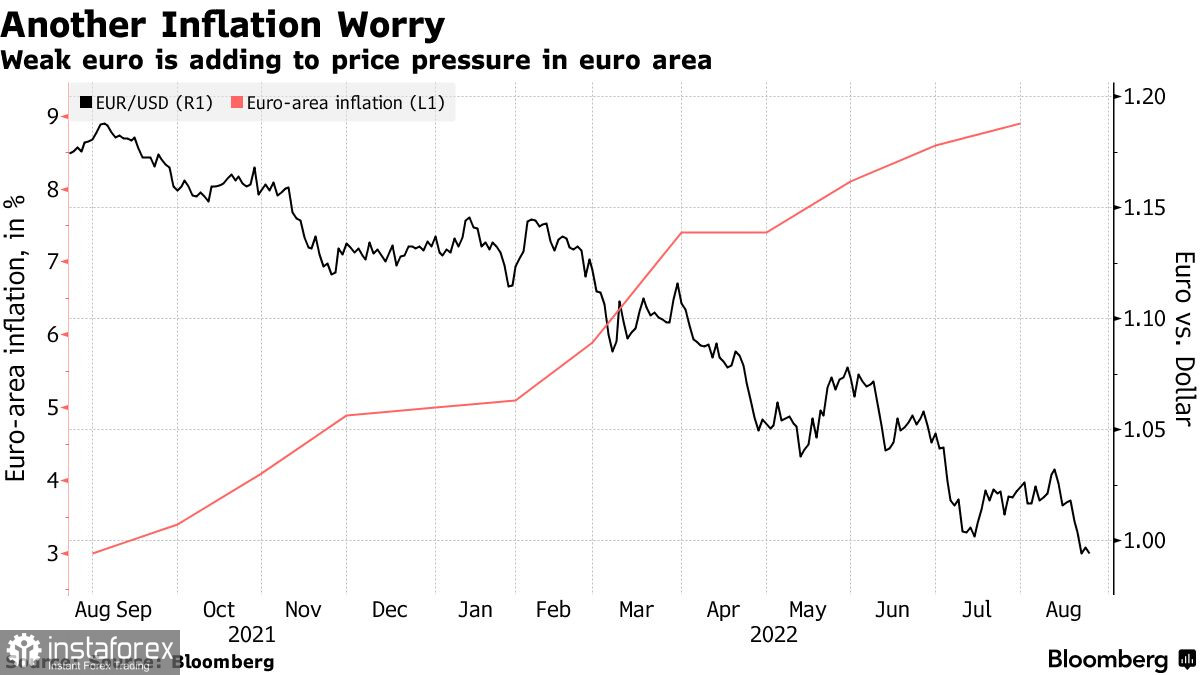It follows from economic theories that a cheap national currency should help enterprises engage in exports and contribute to their more active development of growth. As practice has shown, those companies wanting a weaker euro for years now want everything to go back.
The European currency has fallen by more than 12% against the dollar this year, falling below parity for the first time in two decades. This decline increases the cost of imports, exacerbating the devastating jump in energy prices and the record jump in inflation that has hit the economy. All this is bad news for marginal German enterprises, which recently warned that they continue to face problems in the form of high costs. In addition, consumer inflation in the eurozone is already close to 9%, constraining demand and seriously affecting future sales and profits.

As I noted above, whatever positive statements come from the currency's depreciation — export competitiveness, the impact of the exchange rate on foreign income — are overshadowed by the energy crisis and the threat of recession. Europe is particularly vulnerable because of its dependence on imports from Russia. Gas supplies have already been reduced, and further cuts will create an even greater burden on the region's economy, especially Germany. As the latest figures have shown, the activity of the German manufacturing sector is rapidly declining – and this is just the beginning.
According to some experts from JPMorgan, the euro is not the only asset reflecting concerns about the state of the European economy. Falling below parity is "a symbol of the big risks of declining growth in Europe." At the moment, not only is the euro in disgrace. European stocks are trading at a noticeable 30 percent discount against US stocks, which confirms problems for market sectors such as energy and finance.
Economic concerns are also fueling exchange rate fluctuations as traders bet on the European Central Bank's limited ability to tighten monetary policy. Many are confident that the European regulators will fall further behind the aggressive pace of the Federal Reserve System in the near future. The growing difference in interest rates benefits the dollar, weakening the euro.
Morgan Stanley predicts that the euro will fall to $0.97 this quarter, a level not seen since the early 2000s. JPMorgan expects it to test $0.95 in the second half of this year.Societe Generale SA believes that a weak euro damages the company's profits due to higher commodity prices expressed in dollars. If domestic and global demand also weakens due to a blow to real incomes and consumer spending, then companies' sales and profits may also suffer.
So far, there is no real reason to increase long positions in the euro in the medium term.
Against this background, the euro continues to fall. Bulls need to correct the situation very quickly and return to 0.9940 since, without this level, the problems will only increase. Going beyond 0.9940 will give confidence to buyers of risky assets, opening a direct road to 1.0000 and 1.0130. If there is a further decline in the euro, buyers will probably show something around 0.9860, but this will not help them much since updating the next annual minimum will only strengthen the bear market. Having missed 0.9860, you can say goodbye to hopes for a correction, which will open a direct road to 0.9820.
Nothing good happens to the pound. Buyers need to do everything to stay above 1.1750 – the nearest support level. Without doing this, you can say goodbye to the hopes of recovery. Moreover, in this case, we can expect a new major movement of the trading instrument to the levels: 1.1690 and 1.1640. A breakdown of these ranges will open a direct road to 1.1580. It will be possible to talk about stopping the bearish scenario only after the breakdown and consolidation above 1.1800, allowing the bulls to count on a recovery to 1.1850 and 1.1895.





















